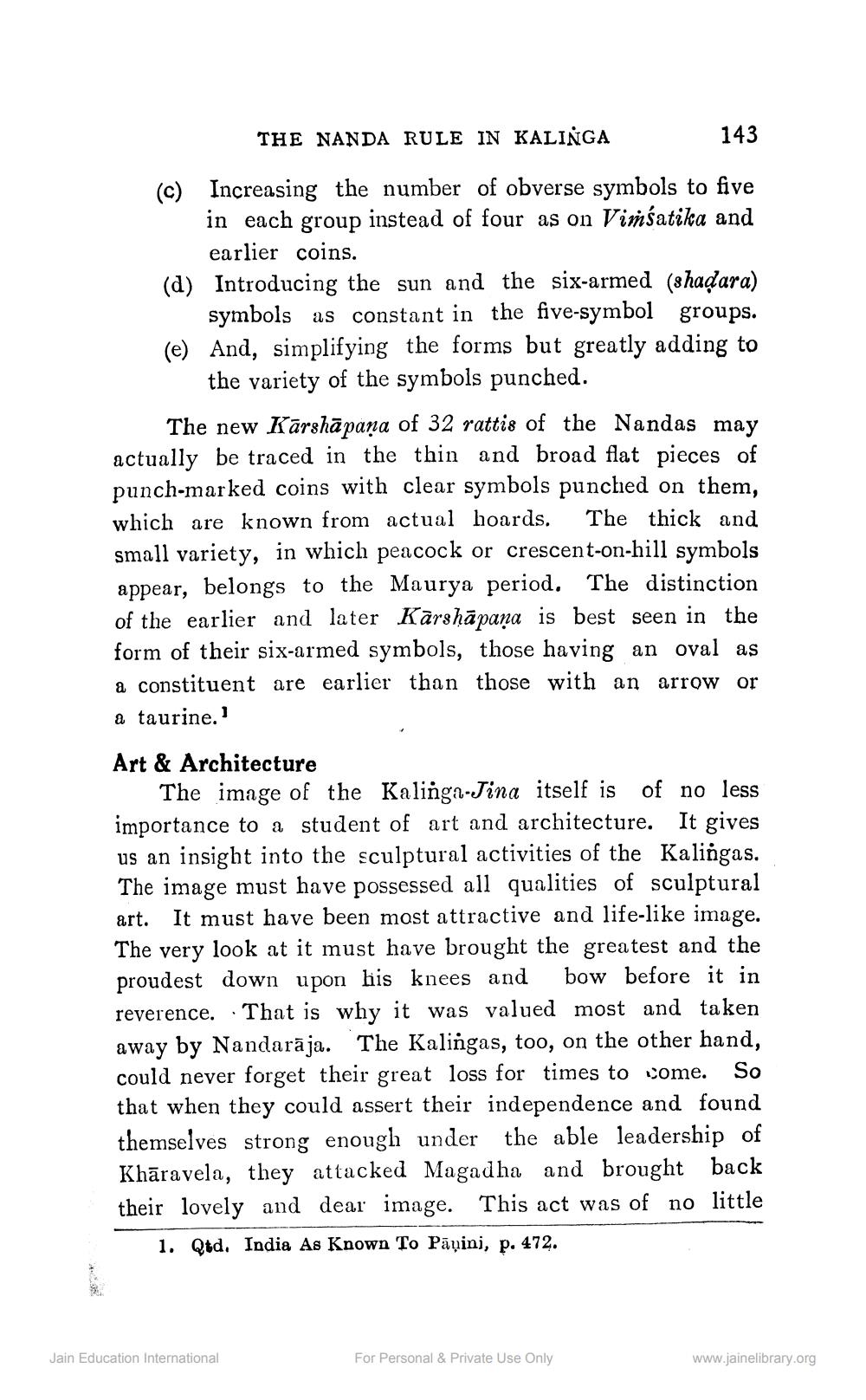________________
THE NANDA RULE IN KALINGA
143
(c) Increasing the number of obverse symbols to five
in each group instead of four as on Vimśatika and
earlier coins. (d) Introducing the sun and the six-armed (shaďara)
symbols as constant in the five-symbol groups. (e) And, simplifying the forms but greatly adding to
the variety of the symbols punched.
The new Kārshāpaņa of 32 rattis of the Nandas may actually be traced in the thin and broad flat pieces of punch-marked coins with clear symbols punched on them, which are known from actual hoards. The thick and small variety, in which peacock or crescent-on-hill symbols appear, belongs to the Maurya period. The distinction of the earlier and later Kārshāpana is best seen in the form of their six-armed symbols, those having an oval as a constituent are earlier than those with an arrow or a taurine. Art & Architecture
The image of the Kalinga-Jina itself is of no less importance to a student of art and architecture. It gives us an insight into the sculptural activities of the Kalingas. The image must have possessed all qualities of sculptural art. It must have been most attractive and life-like image. The very look at it must have brought the greatest and the proudest down upon his knees and bow before it in reverence. That is why it was valued most and taken away by Nandarāja. The Kalingas, too, on the other hand, could never forget their great loss for times to come. So that when they could assert their independence and found themselves strong enough under the able leadership of Khāravela, they attacked Magadha and brought back their lovely and dear image. This act was of no little
1. Qtd. India As Known To Pāṇini, p. 472.
Jain Education International
For Personal & Private Use Only
www.jainelibrary.org




